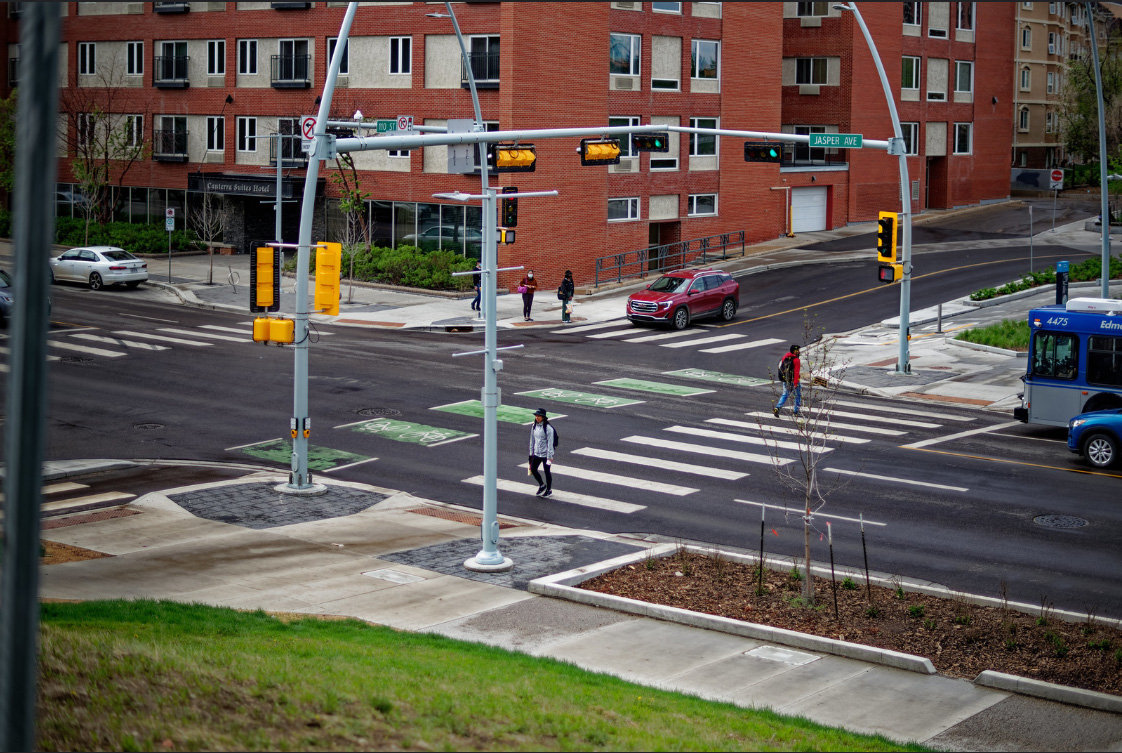Street Layout and Available Destinations Influence Urban Walking Behavior
Researchers from Japan and Canada find that destinations can influence how the built environment enables walking behavior
The built environment can facilitate walking by making it the automatic or preferred choice for citizens. However, most people do not reap these health benefits. While available evidence suggests that higher street connectivity and availability of destinations is likely to support walking behavior, the lack of hard data and comparisons between previous studies complicates matters. This study examines the associations between street layout and walking behaviors and asks whether objectively measured destinations mediate these relationships.
It is well known that being physically active benefits mental and physical health. Unfortunately, many people living in urban areas do not engage in sufficient physical activity to reap these benefits. Factors contributing to this lack of physical activity include biological, family, political, and built environment variables. Research shows that the built environment can facilitate more physical activity by providing opportunities that make walking the automatic or preferred choice for urban dwellers. Along these lines, evidence suggests that walking behavior in a neighborhood is linked to the connectivity of streets and the availability of destinations. The gap in our understanding is that there is little empirical evidence to quantify this relationship, and most previously available insights cannot be compared.
Researchers in Japan and Canada recently focused on a key theory in space syntax to understand how the availability of destinations drives the association between street layout and walking behavior. Associate Professor Mohammad Javad Koohsari from the Japan Advanced Institute of Science and Technology (JAIST), an adjunct researcher at the Waseda University as well, led the team that partnered with Alberta's Tomorrow Project for the study. The study was co-authored by Professor Koichiro Oka from Waseda University, Professor Tomoki Nakaya from Tohoku University, and Associate Professor Gavin R. McCormack from the University of Calgary. The team's findings have been published in the Journal of Urban Health.
"We knew that walking behavior was associated with street connectivity and aimed to advance the urban design and health science by testing the hypothesis that the availability of destinations influenced the type of walking behavior, leisure or transportation, for a given street layout. Space syntax is a science-based and people-centric technique incorporating theories linking space and society. It facilitates the objective testing of how destinations on connected streets influence walking behavior," explains Dr. Koohsari.
The team leveraged space syntax as this method outperforms conventional tools when quantifying street connectivity. Other approaches that rely on the density of intersections and city block sizes cannot accurately quantify street connectivity. Space syntax also captures the capacity of a given street layout to guide the flow of pedestrian traffic. The group included measurements of available destinations in their analysis to understand how these destinations influenced walking behavior and used questionnaires to collect data on the nature of walking (leisure or transportation). This data allowed them to understand how the purpose of walking was linked to street integration and the time spent walking.
"Our analyses revealed that street integration influenced walking undertaken as a means of transport. Importantly, it was the availability of destinations that strengthened this relationship. As far as leisure walking was concerned, there was no significant relationship between the distance covered and the degree of street integration," says Dr. Koohsari. These findings are interesting as they expand on previous insights into street connectivity and walking by relying on objective measurements of destinations and different types of walking behavior. Furthermore, the large sample of people surveyed-12,378 adults-lends greater credibility to the results.
But what can urban designers and planners hope to learn from the research? Dr. Koohsari is confident the findings can guide the design and even re-design of urban areas to improve the lives of citizens. He concludes, "Implementing the results of such analyses has two main benefits. First, designing well-connected street layouts that provide easy access to retail stores, educational institutions, and recreational facilities will encourage walking to these destinations. Second, strategically placing destinations along integrated street layouts can lead to more activity-friendly urban environments."
Thanks to the researchers for offering timely and valuable insights for a better neighborhood and our good health.

Image Title: Built environment interventions to promote walking
Image Caption: Researchers provide evidence that the availability of destinations influences the association between street layout and walking behavior in urban settings.
Image Credit: Kurayba on Flickr
Image Source Link: https://www.flickr.com/photos/kurt-b/52098256155/
License Type: CC BY-SA 2.0
Reference
| Title of original paper: | Urban form metrics for promoting walking: Street layouts and destinations |
| Authors: | Mohammad Javad Koohsari*, Koichiro Oka, Tomoki Nakaya, Gavin R. McCormack |
| Journal: | Journal of Urban Health |
| DOI: | 10.1007/s11524-023-00775-2 |
Funding information
Mohammad Javad Koohsari received funding from JSPS KAKENHI (grant 23K09701). Koichiro Oka received a grant from the JSPS Grants-in-Aid for Scientific Research program (grant 20H04113). Tomoki Nakaya was supported by a grant from the Japan Society for the Promotion of Science (JSPS) Grants-in-Aid for Scientific Research program (grant 20H00040). Gavin R. McCormack received support from a Canadian Institutes of Health Research Foundations Scheme Grant (FDN-154331).
August 31, 2023
